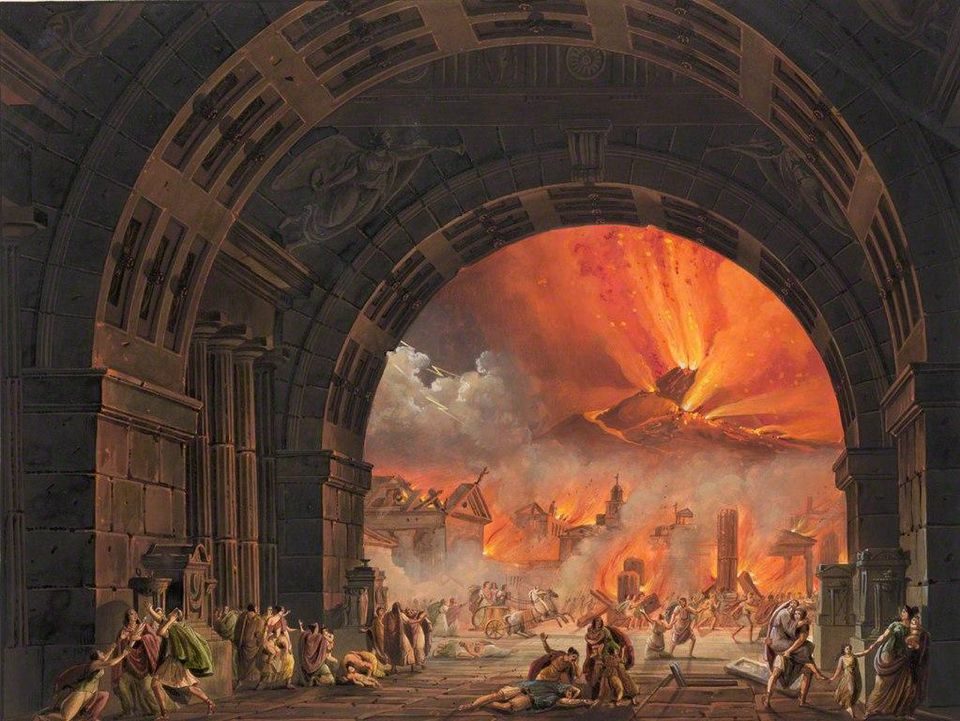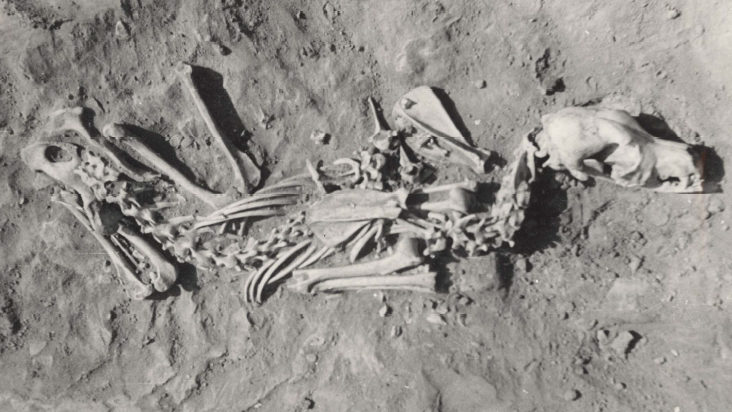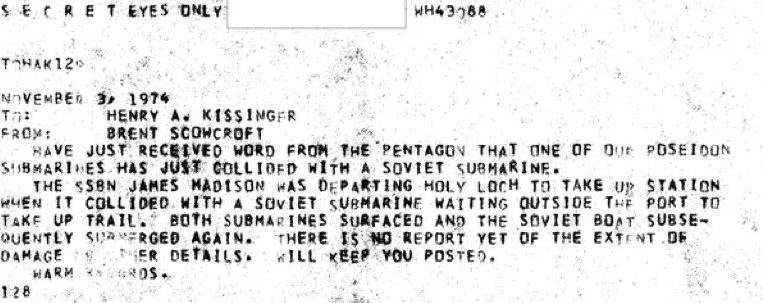
© Wikimedia Commons / Public DomainAlessandro Sanquirico's set design depicting the eruption of Vesuvius, the climactic scene of Giovanni Pacini's opera, L'ultimo giorno di Pompei, which premiered at the Teatro San Carlo, Naples in 1825.
The plaster casts of Romans killed when Mt. Vesuvius erupted in 79 A.D. are internationally famous, but
scholars have long known that more people escaped the volcano's destruction of the Bay of Naples than were suffocated by it. New evidence from inscriptions provides clues to where these refugees settled.
In a forthcoming open-access article in the journal
Analecta Romana, archaeologist and historian
Steven Tuck of Miami University explains how his creation of
a database of Roman last names led him to match up records from Pompeii and Herculaneum with records from the parts of Italy unaffected by the destructive power of Vesuvius. Tuck's goal in doing this work was not just to identify refugees but also "to draw conclusions about who survived the eruption, where they relocated, why they went to certain communities, and what this pattern tells us about how the ancient Roman world worked socially, economically, and politically."
In order to find refugees, Tuck needed to investigate inscriptions on public buildings and tombstones, because
historical records only emphasized the physical damage of disasters. This may seem odd to us today, as our news reports tend to center the loss of human life as the main result of a catastrophe, but in Roman times only a handful of narratives, such as Pliny the Younger's account of his famous uncle's death near Pompeii, reflect the human toll of these ancient natural disasters.




Comment: R. G. Collingwood's book Speculum Mentis may be able to provide some insight into what kind of people produced these gargoyles, grotesques and Sheela-na-gigs: See also: